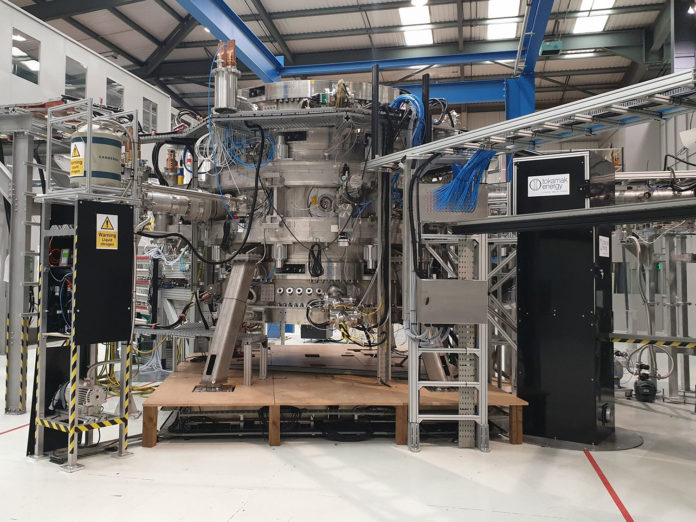If nuclear fusion reaction – the process that powers the Sun and other stars – could be used on a consistent basis on Earth, it would be a source of virtually unlimited clean energy. But there are still a lot of obstacles to overcome.
U.K.-based nuclear fusion firm Tokamak Energy has demonstrated a world-first with its privately-funded ST40 spherical tokamak, achieving a plasma temperature of 100 million degrees Celsius. This threshold is necessary for the future deployment of commercially successful fusion power. According to the company, this is by far the highest temperature ever achieved in a spherical tokamak and by any privately funded tokamak.
Several government laboratories have reported plasma temperatures above 100 million degrees in conventional tokamaks, including South Korea’s KSTAR reactor and China’s “artificial sun” EAST tokamak reactor. However, Tokamak Energy highlights that its milestone has been achieved in just five years, or a cost of less than £50m ($70m), in a much more compact fusion device. This achievement further substantiates spherical tokamaks as the optimal route to the delivery of clean, secure, low-cost, scalable, and globally deployable commercial fusion energy.
The company says it carried out the new plasma measurement with over 25 diagnostic tools in the ST40, utilizing the latest advanced measurement technologies. The 100 million temperature milestone has been verified by an independent advisory board consisting of international experts.
“We are proud to have achieved this breakthrough which puts us one step closer to providing the world with a new, secure, and carbon-free energy source,” said Chris Kelsall, CEO of Tokamak Energy. “When combined with HTS magnets, spherical tokamaks represent the optimal route to achieving clean and low-cost commercial fusion energy. Our next device will combine these two world-leading technologies for the first time and is central to our mission to deliver low-cost energy with compact fusion modules.”
The ST40 device will now undergo an upgrade and be used to develop technologies for future devices. The ST-HTS will be the world’s first spherical tokamak to demonstrate the full potential of high temperature superconducting (HTS) magnets and is due to be commissioned in the mid-2020s. This device will demonstrate multiple advanced technologies required for fusion energy and inform the design of a world-first fusion pilot plant, to be commissioned in the early 2030s.
